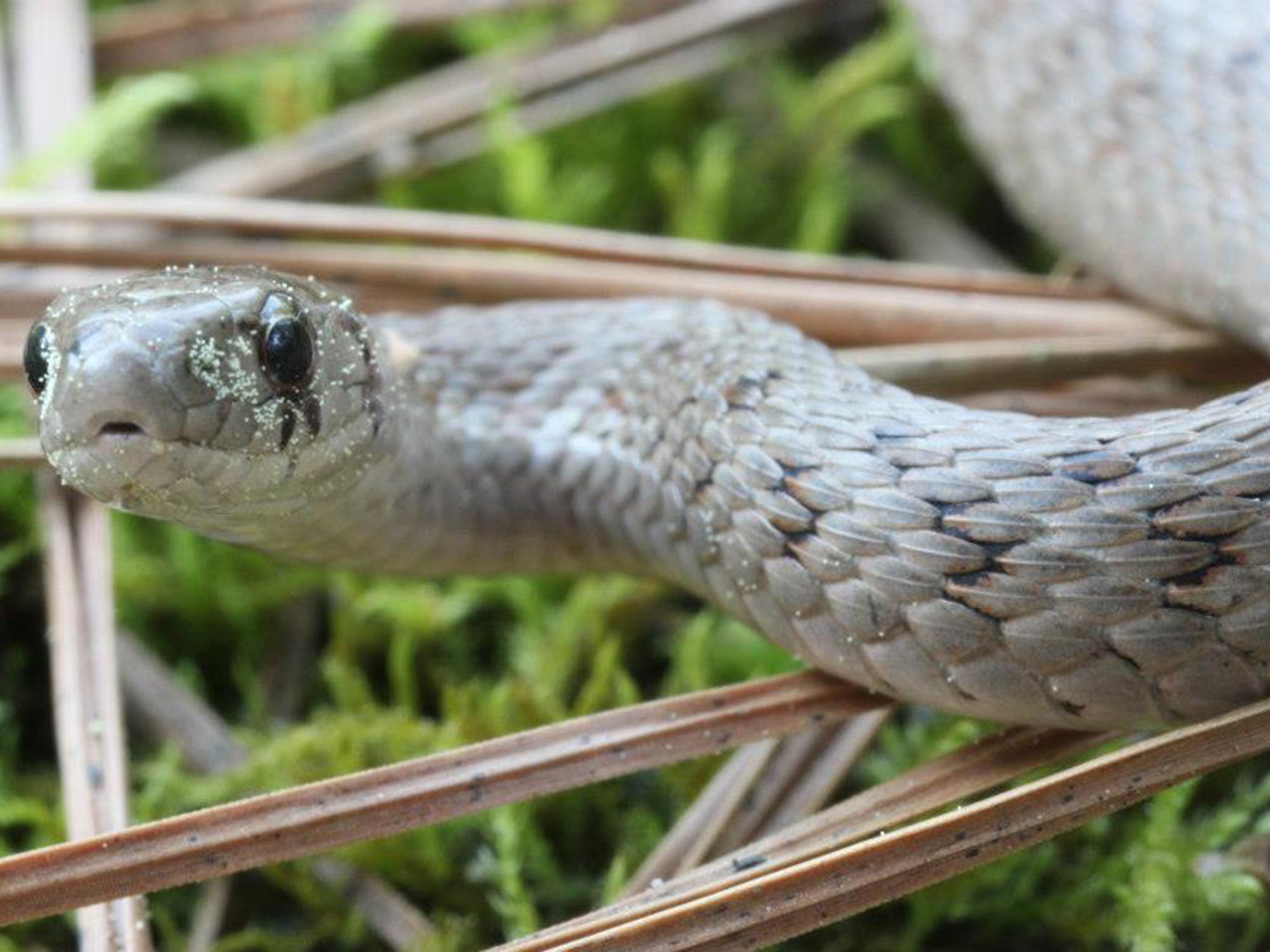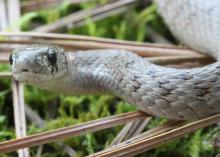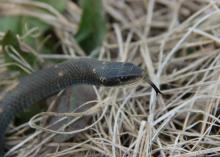Information Possibly Outdated
The information presented on this page was originally released on April 17, 2013. It may not be outdated, but please search our site for more current information. If you plan to quote or reference this information in a publication, please check with the Extension specialist or author before proceeding.
Warm weather brings out sun-seeking snakes
MISSISSIPPI STATE – Mississippi is home to a wide variety of creatures, and warmer spring temperatures bring many of them -- including snakes -- out into the sun.
“We have 35 species of nonvenomous snakes and just 6 species of venomous snakes,” said Adam Tullos, who specializes in wildlife management with the Mississippi State University Extension Service. “We also have snakes that are protected and endangered. Snakes benefit people by keeping insect, reptile and small mammal populations under control.”
Tullos, who works at the North Mississippi Research and Extension Center, said as temperatures rise in spring, snakes become more active.
“Snakes come out about the time turkey hunting is at its best,” he said. “I encourage hunters to wear snake guards or knee-high snake boots when trudging through the woods.”
Tullos said outdoor adventurers need to watch where they step when hiking, camping, canoeing and boating, because snakes love to sun on the trail and water’s edge.
“If you see a snake, take two steps back to get out of the strike zone. Then take a deep breath and try to identify it,” he said. “Is it rattling or hissing? If it’s in an aggressive position, action might be required. If it’s minding its own business, leave it alone for 20 minutes to see if it will go away on its own.”
Allowing nonvenomous snakes to pursue rodents, such as moles and voles, can benefit Mississippi’s landscapes.
“When we remove our reptilian friends from our landscapes, gardens and lawns, we risk opening ourselves to increased rodent problems. The lack of environmental controls, like predators, allows rodent populations to expand rapidly,” he said.
Several species of snakes typically found around Mississippi gardens are beneficial, such as gray rat, garter, black racer, brown, Eastern hog nose, corn and the snake-eating king snake.
But gardeners can make snake encounters less likely by keeping landscapes free of debris.
Jarrod Fogarty, biology instructor at MSU’s Meridian campus, said cleaning up around your house and yard removes the desired food source – rats and mice.
“People want to store gardening pots and supplies around the house and in the garage, but they’ll attract mice, and subsequently, snakes,” he said.
“You can’t put out any scent, such as mothballs, to keep snakes away,” Fogarty said. “Snakes aren’t as sensitive as humans to the scent of mothballs. If one smells a mouse, it’s not going to stop because of a mothball smell.”
Fogarty said common sense is the best way to handle snake encounters.
“Most people don’t realize that almost all of Mississippi’s snakes are completely harmless,” he said. “But if you can’t identify it, just stay away and keep yourself from getting bitten. Most people who get bitten are trying to handle a snake.”
The Mississippi Museum of Natural Science maintains a list of reptile and amphibians at http://bit.ly/ZYLgxx. Two MSU Extension Service publications about snakes are available at IS641, “Snakes Alive! How to Identify Snakes” and P2277, “Reducing Snake Problems Around Homes.”
For information about restrictions regarding the harvesting, possession and hunting of reptiles, contact the Mississippi Department of Wildlife, Fisheries and Parks or refer to Public Notice M3-3201.








